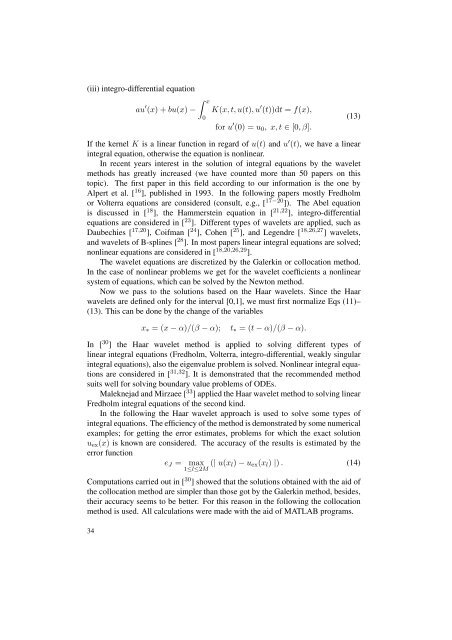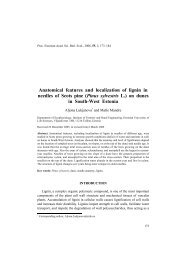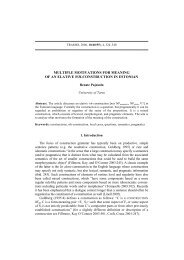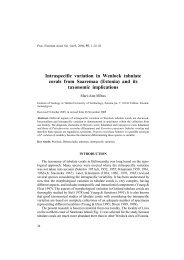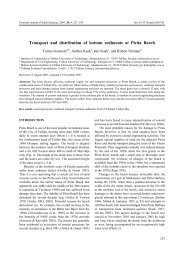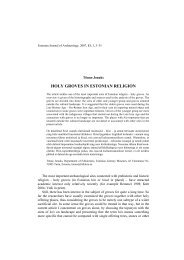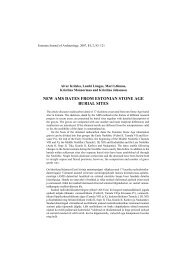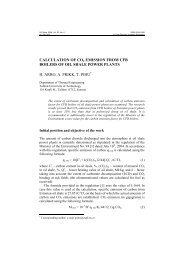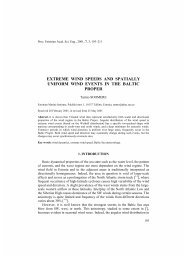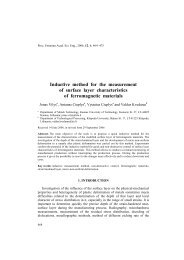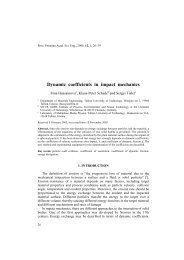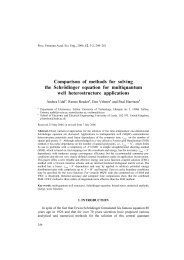Application of the Haar wavelet transform to solving integral and ...
Application of the Haar wavelet transform to solving integral and ...
Application of the Haar wavelet transform to solving integral and ...
Create successful ePaper yourself
Turn your PDF publications into a flip-book with our unique Google optimized e-Paper software.
(iii) integro-differential equation<br />
au ′ (x) + bu(x) −<br />
∫ x<br />
0<br />
K(x, t, u(t), u ′ (t))dt = f(x),<br />
for u ′ (0) = u 0 , x, t ∈ [0, β].<br />
(13)<br />
If <strong>the</strong> kernel K is a linear function in regard <strong>of</strong> u(t) <strong>and</strong> u ′ (t), we have a linear<br />
<strong>integral</strong> equation, o<strong>the</strong>rwise <strong>the</strong> equation is nonlinear.<br />
In recent years interest in <strong>the</strong> solution <strong>of</strong> <strong>integral</strong> equations by <strong>the</strong> <strong>wavelet</strong><br />
methods has greatly increased (we have counted more than 50 papers on this<br />
<strong>to</strong>pic). The first paper in this field according <strong>to</strong> our information is <strong>the</strong> one by<br />
Alpert et al. [ 16 ], published in 1993. In <strong>the</strong> following papers mostly Fredholm<br />
or Volterra equations are considered (consult, e.g., [ 17−20 ]). The Abel equation<br />
is discussed in [ 18 ], <strong>the</strong> Hammerstein equation in [ 21,22 ], integro-differential<br />
equations are considered in [ 23 ]. Different types <strong>of</strong> <strong>wavelet</strong>s are applied, such as<br />
Daubechies [ 17,20 ], Coifman [ 24 ], Cohen [ 25 ], <strong>and</strong> Legendre [ 18,26,27 ] <strong>wavelet</strong>s,<br />
<strong>and</strong> <strong>wavelet</strong>s <strong>of</strong> B-splines [ 28 ]. In most papers linear <strong>integral</strong> equations are solved;<br />
nonlinear equations are considered in [ 18,20,26,29 ].<br />
The <strong>wavelet</strong> equations are discretized by <strong>the</strong> Galerkin or collocation method.<br />
In <strong>the</strong> case <strong>of</strong> nonlinear problems we get for <strong>the</strong> <strong>wavelet</strong> coefficients a nonlinear<br />
system <strong>of</strong> equations, which can be solved by <strong>the</strong> New<strong>to</strong>n method.<br />
Now we pass <strong>to</strong> <strong>the</strong> solutions based on <strong>the</strong> <strong>Haar</strong> <strong>wavelet</strong>s. Since <strong>the</strong> <strong>Haar</strong><br />
<strong>wavelet</strong>s are defined only for <strong>the</strong> interval [0,1], we must first normalize Eqs (11)–<br />
(13). This can be done by <strong>the</strong> change <strong>of</strong> <strong>the</strong> variables<br />
x ∗ = (x − α)/(β − α);<br />
t ∗ = (t − α)/(β − α).<br />
In [ 30 ] <strong>the</strong> <strong>Haar</strong> <strong>wavelet</strong> method is applied <strong>to</strong> <strong>solving</strong> different types <strong>of</strong><br />
linear <strong>integral</strong> equations (Fredholm, Volterra, integro-differential, weakly singular<br />
<strong>integral</strong> equations), also <strong>the</strong> eigenvalue problem is solved. Nonlinear <strong>integral</strong> equations<br />
are considered in [ 31,32 ]. It is demonstrated that <strong>the</strong> recommended method<br />
suits well for <strong>solving</strong> boundary value problems <strong>of</strong> ODEs.<br />
Maleknejad <strong>and</strong> Mirzaee [ 33 ] applied <strong>the</strong> <strong>Haar</strong> <strong>wavelet</strong> method <strong>to</strong> <strong>solving</strong> linear<br />
Fredholm <strong>integral</strong> equations <strong>of</strong> <strong>the</strong> second kind.<br />
In <strong>the</strong> following <strong>the</strong> <strong>Haar</strong> <strong>wavelet</strong> approach is used <strong>to</strong> solve some types <strong>of</strong><br />
<strong>integral</strong> equations. The efficiency <strong>of</strong> <strong>the</strong> method is demonstrated by some numerical<br />
examples; for getting <strong>the</strong> error estimates, problems for which <strong>the</strong> exact solution<br />
u ex (x) is known are considered. The accuracy <strong>of</strong> <strong>the</strong> results is estimated by <strong>the</strong><br />
error function<br />
e J = max (| u(x l) − u ex (x l ) |) . (14)<br />
1≤l≤2M<br />
Computations carried out in [ 30 ] showed that <strong>the</strong> solutions obtained with <strong>the</strong> aid <strong>of</strong><br />
<strong>the</strong> collocation method are simpler than those got by <strong>the</strong> Galerkin method, besides,<br />
<strong>the</strong>ir accuracy seems <strong>to</strong> be better. For this reason in <strong>the</strong> following <strong>the</strong> collocation<br />
method is used. All calculations were made with <strong>the</strong> aid <strong>of</strong> MATLAB programs.<br />
34


